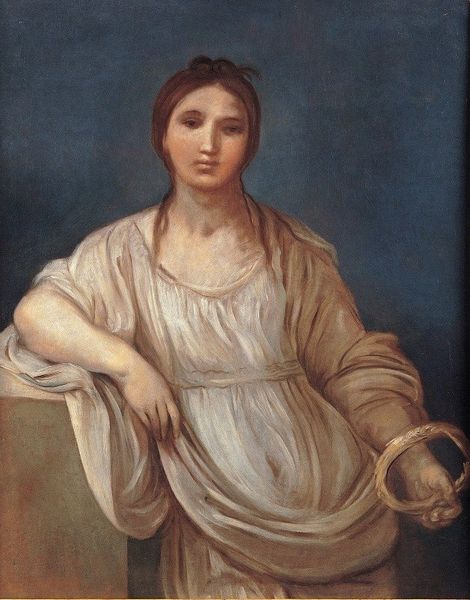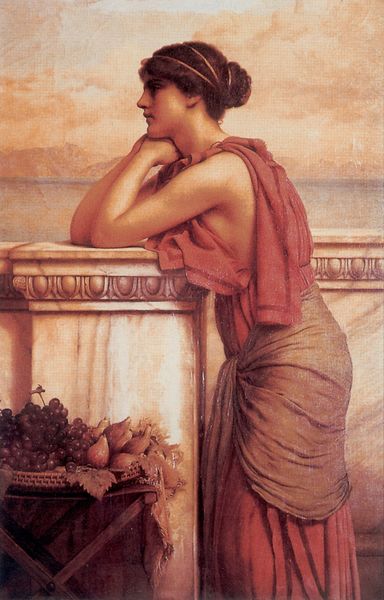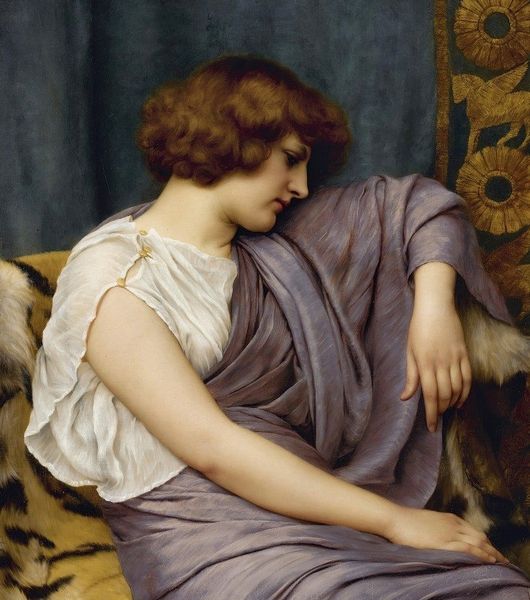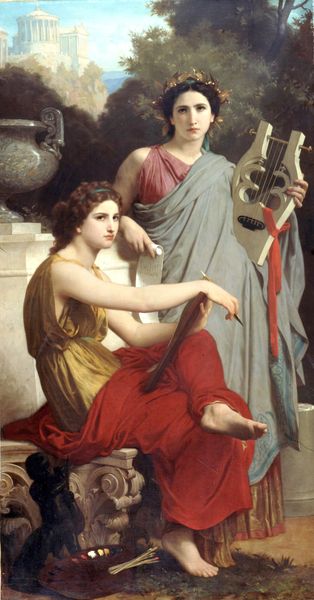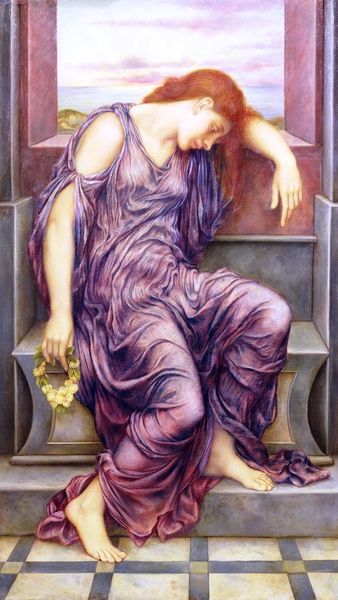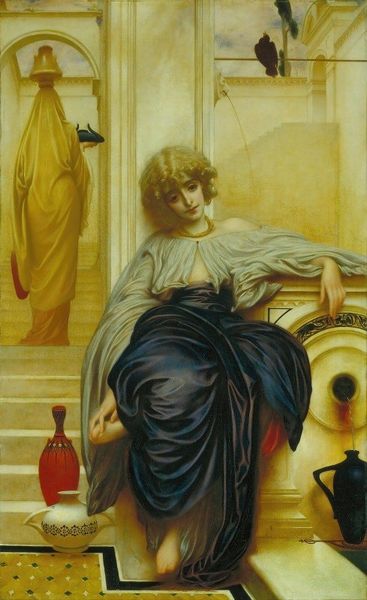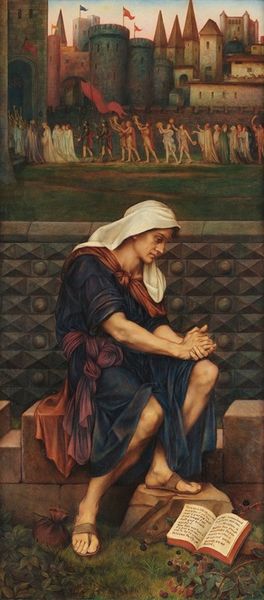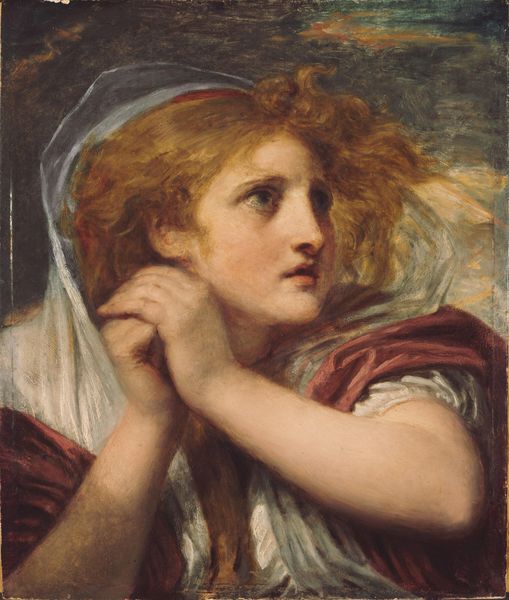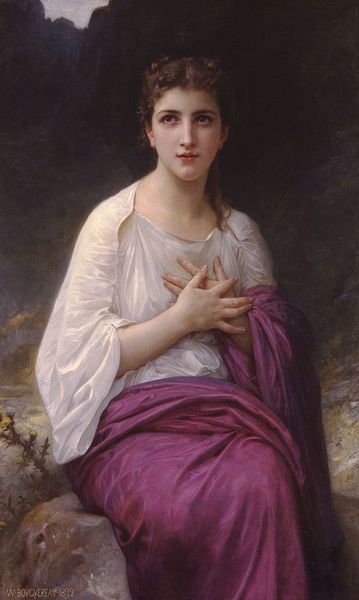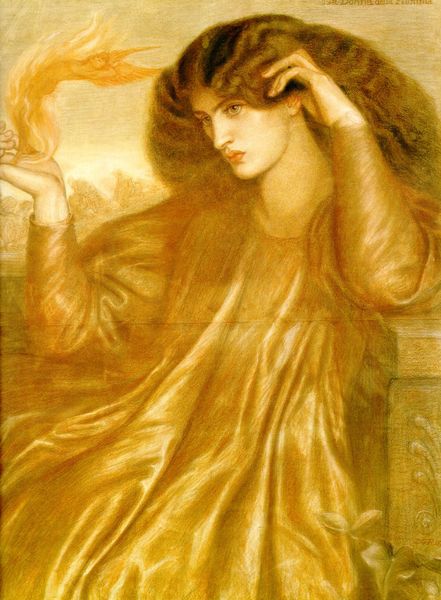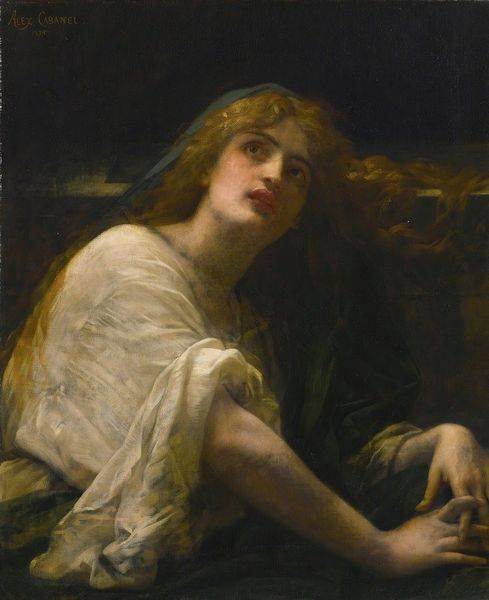
painting, oil-paint
#
portrait
#
allegory
#
painting
#
oil-paint
#
oil painting
#
mythology
#
history-painting
#
academic-art
Copyright: Public Domain: Artvee
Editor: So here we have "Mnemosyne, Mother of the Muses" by Frederic Leighton, done with oil paint. It feels quite weighty, both in terms of color and in the draping of the fabrics. I’m interested in the materiality of this piece – the artist’s process. What can you tell me about this work? Curator: It's interesting you key in on the fabrics, because Leighton was very interested in how the *materiality* of cloth communicated status and power. The way the folds are rendered suggests both luxury and the weight of responsibility. Think about where Leighton sourced such costly dyes in the Victorian era and the colonial networks enabling the mass consumption of luxury fabrics and artistic pigment by the bourgeoise at the time. Do you think Leighton is glorifying these cultural forces or casting some subtle critique of their labor implications by using these weighted fabrics in a representation of solemn mythological figure? Editor: I never thought about the weightiness referring to the labor put into such fabrics... the figure almost seems burdened by it. But wasn't Leighton part of that bourgeoisie? Curator: Exactly! It gets interesting because Leighton relies on, and yet subtly calls attention to, those same class structures, inviting us to reflect on both their appeal and their material and ethical cost. Editor: So, the appeal comes from the beauty, wealth, and prestige... while the 'ethical cost' lurks in the extraction and manufacturing required to attain them. Curator: Precisely. I also think it's really telling that oil paints, made using newly industrialised pigment-production technologies, could imitate those lavishly-produced, very realistic draperies as painting achieved photo-like realism with modern industrial products in paint. The figure seems self-consciously posed atop what looks like factory scaffolding--not the plinth or seat of ancient mythology at all. What have you gathered from this insight on material analysis? Editor: I am rethinking the whole narrative of Academic painting now! Thank you for your unique explanation.
Comments
No comments
Be the first to comment and join the conversation on the ultimate creative platform.
